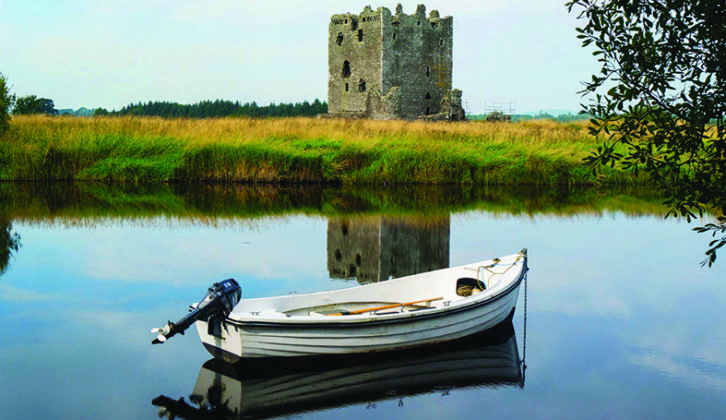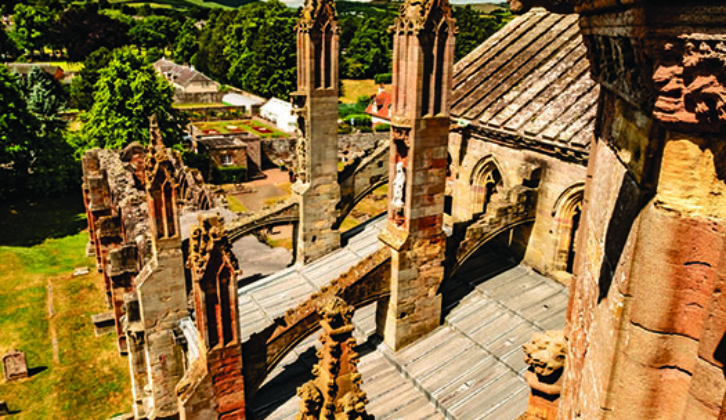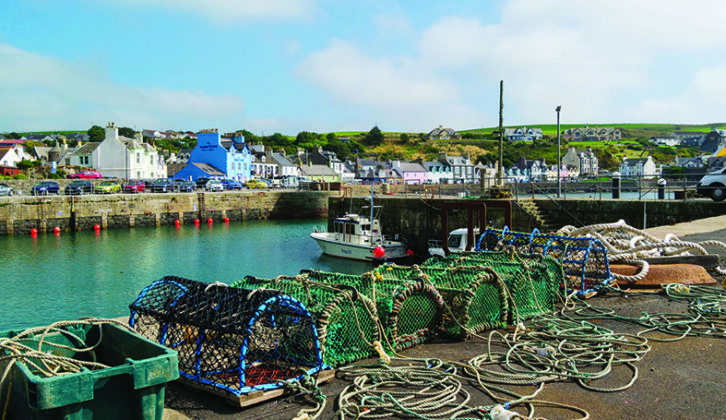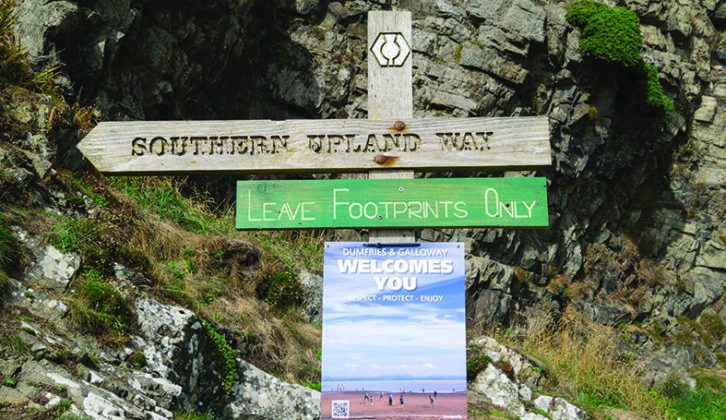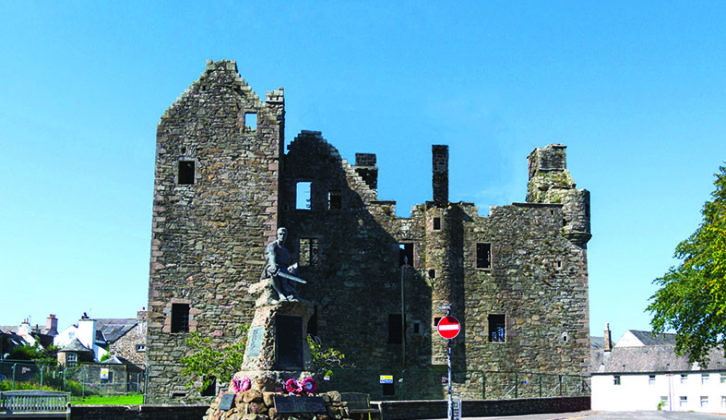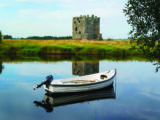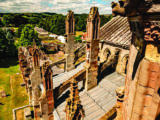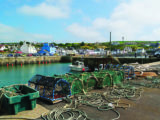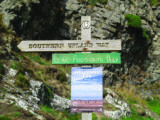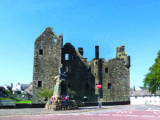The school holidays were over and it was time for us to think about another tour. We have attempted to visit Dumfries and Galloway, in Scotland, before, but without success, so we decided to try again.
This also gave us an ideal chance to visit Pearl’s sister, who lives near Coldstream. We haven’t seen her for two years now, with several planned trips being cancelled.
We stayed with her for three nights, giving us the opportunity to get out and about in the area. The first morning, we decided to head for Cocklawburn Beach.
Before our stroll, we stopped for coffee at Pot-A-Doodle-Do, Scremerston, just one mile from Cocklawburn. Then we headed for the beach, part of the Northumberland Area of Outstanding Natural Beauty and the Lindisfarne Site of Special Scientific Interest. You can see why this place is very popular with families during the summer and with dog-walkers all year round.
Sadly, when we were there, the weather wasn’t great, so the views were limited, which was a pity because there are regular sightings of dolphins hereabouts. Having walked far enough to give Pearl’s sister’s dog a good run along the sand, we returned to Pot-A-Doodle-Do for lunch, before heading to our temporary home.
Abbey and bridge
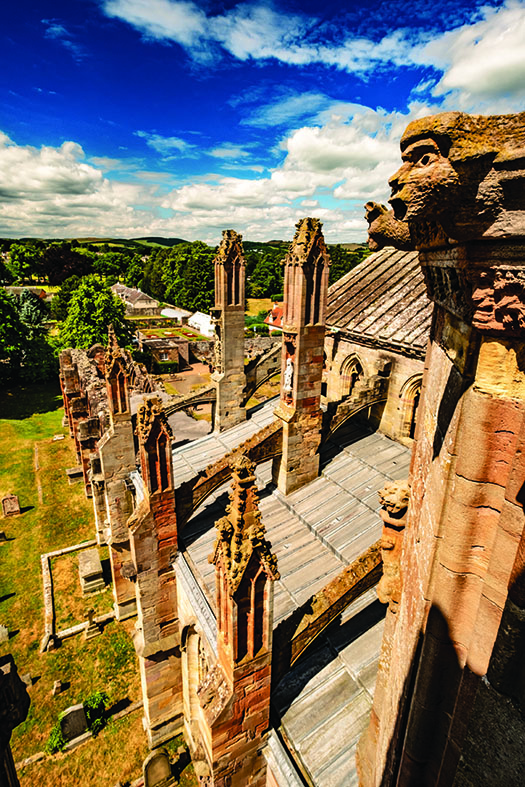
The next day, we decided to visit Melrose, to enjoy a walk beside the River Tweed and see the ruins of Melrose Abbey.
We had lunch at the Abbey Bistro before heading off to the Gattonside Suspension Footbridge (also known as the Chain Bridge), which spans the Tweed.
There is a good footpath on both sides, but we opted for the one on the far side of the bridge. Having had another excellent walk with the dog, we returned to town and strolled around the Melrose Abbey ruins.
Melrose Abbey, also known as St Mary’s Abbey, has a long history. It was founded in 1136 by Cistercian monks, at the request of James I of Scotland, and was the chief house of that order in the country until the Reformation in the 16th century.
The grounds, cloister and museum are open, although there is currently no access to the magnificent ruins of the abbey itself.
It was time for us to head back, but we stopped at Floors Castle Courtyard Cafe for an enjoyable afternoon tea.
Travelling north
The following morning we bade our host goodbye and then headed along the A7 to Dumfries. As it was still quite early, we decided to pitch up at the site then return to take a look around the town.
Dumfries is a historic market town with much to commend it to visitors. Its local name, Queen of the South, dates back to 1857, when a resident power, David Dunbar, stood for Parliament. In one of his election speeches, he called Dumfries ‘Queen of the South’, and the name stuck.
It was Sunday, so it was blissfully quiet when we strolled into the attractive town centre, with its fine fountain and colourful flower displays; then it was onwards to find the statue of its most famous inhabitant, Robert Burns, in Church Place. Designed by sculptor Amelia Paton Hill in the late 1870s, it was carved in Carrara marble. The poet is portrayed seated, his dog at his feet.
Now in need of a refuelling stop, we went into a nearby cafe for afternoon tea, before heading back to the campsite.
Woodland and ponds
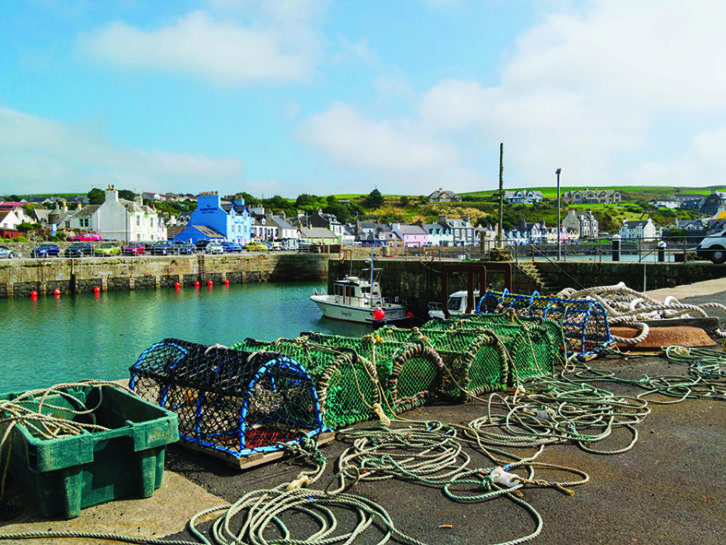
We were staying at Auchenfranco Caravan & Camping Site, about six miles from the centre of Dumfries. The park is on a working farm, with woodland and extensive farmland. There is an abundance of wildlife around here, including deer, otters and red squirrels – sadly, we didn’t spot anything during our visit, although we did hear a tawny owl on our first night. The site is deep in the country, in a beautiful location.
The following morning we drove to Castle Douglas, another fine old market town, in search of coffee. We made a lucky find in Designs Gallery, which has an excellent café.
Suitably sustained, we set off to explore the town. Caslte Douglas was founded in 1792 by industrialist Sir William Douglas, on the shores of Carlingwark Loch. Planning its streets, he followed the same grid layout as Edinburgh’s New Town, built around the same time.
The Town Hall, constructed in 1863, was designed by local architect James Barbour. The distinctively shaped Clock Tower, on the corner of King Street and St Andrew Street, was built in 1934 and is now a Category C listed building. It replaced the first tower, built by Sir William Douglas, which was destroyed by fire in 1892, as was the second clock tower 40 years later.
Looking for a change of pace, we decided to visit the dramatic coastline of the Solway Firth; so we drove through Auchencairn to Balcary Point, where we decided to stop for a meal at Balcary Bay Country Hotel, which provides lovely views over both bay and firth. After a good lunch, we followed the footpath over Balcary Hill to the coast, admiring the views over to Hestan Island, before returning to the campsite.
The next day, we visited Portpatrick, a pretty seaside town of pastel-coloured houses set in a small bay. As we drove along the A75, we enjoyed wonderful sightings of a number of red kites wheeling in the clear blue sky close to Castle Douglas.
We decided to stop for coffee in Newton Stewart and found an excellent choice in the Brew Ha Ha café, in Victoria Street.
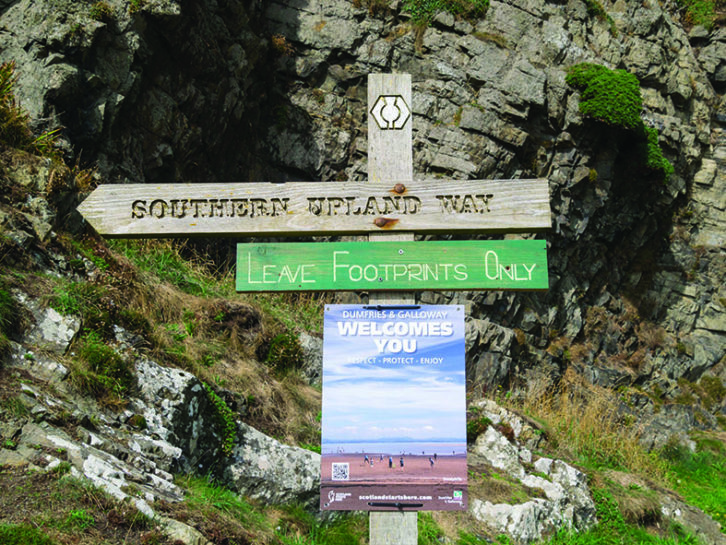
Newton Stewart, on the River Cree, is also known as the Gateway to the Galloway Hills – it lies on the southern edge of the spectacular Galloway Forest Park,. You can see why the park is so popular with visitors, especially keen cyclists – there are plenty of mountain bike trails in the area.
The town also hosts a great selection of independent shops, many of which support the local farming businesses.
Then it was on to Portpatrick, on the western edge of the Rhins of Galloway, a peninsula stretching more than 25 miles from north to south. Its southern tip, the Mull of Galloway, is the southernmost point of Scotland.
Portpatrick was packed with visitors, so we had to search for parking, but we were lucky – someone was leaving as we arrived at the car park by the quay.
We walked around the bustling harbour and seafront, soaking up the atmosphere. It was a lovely day, so we ate lunch sitting in the sunshine overlooking the harbour. This visit was a highlight of our tour: quite a distance from our campsite but well worth the trip.
On our final full day of the trip we decided on a visit to Kirkcudbright, stopping off to see Threave Castle, which is a good 10-minute walk from the car park.
Island fortification
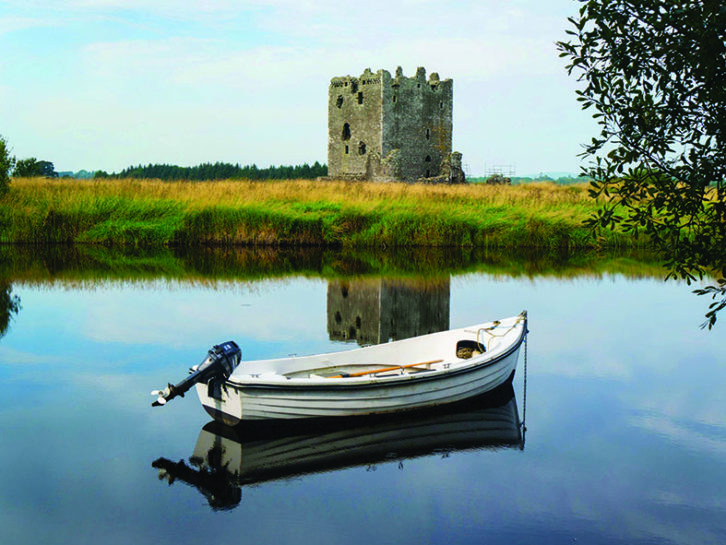
This massive tower house is on an island in the River Dee, so you can only reach it by boat. Built in the 14th century by Archibald Douglas (fondly known as Archibald the Grim), Lord of Galloway, it is now under the care of Historic Scotland.
There is a small jetty at the side of the river with a brass bell and a rope pull, used to summon the boat from the island to take you across to the castle. Unfortunately, access is unsuitable for wheelchair users, because of the steep steps to the boat.
The castle was closed during our visit, so we didn’t make the boat trip, but a little further along the path is an osprey viewing site. We learned that we had missed the final sightings of the season by a few days – the birds had already headed south. But the stunning views across the River Dee are worth the walk for themselves.
Feeling in need of sustenance, we headed back into Castle Douglas, this time to the excellent Streetlights Coffee House.
Later we went to Kirkcudbright, known as the Artists’s Town because of generations of artists housed in the streets behind the picturesque harbour.
There is also a busy fishing industry here, with the town’s harbour and marina at the mouth of the River Dee and only a few miles from the Irish Sea.
Kirkcudbright still has a thriving colony of painters and craftspeople, and you can follow an interesting Art and Crafts Trail, encompassing some 100 venues.
One of these, Broughton House, is a fine 18th-century town house, the former home of Scottish Impressionist Edward A Hornel between 1901 and his death in 1933. The National Trust for Scotland maintains the house, now a museum, and the attractive gardens are also open to the public.
Another place that is well worth a visit is the local museum, the Stewartry Museum. Founded in 1879, it was originally housed in the Town Hall, but when this became too small to hold the growing collections, it was moved to its own purpose-built site.
The museum hosts fascinating exhibits about local history – the ‘stewartry’ was an administrative area held by a steward – together with paintings by local artists.
Galleries and castles
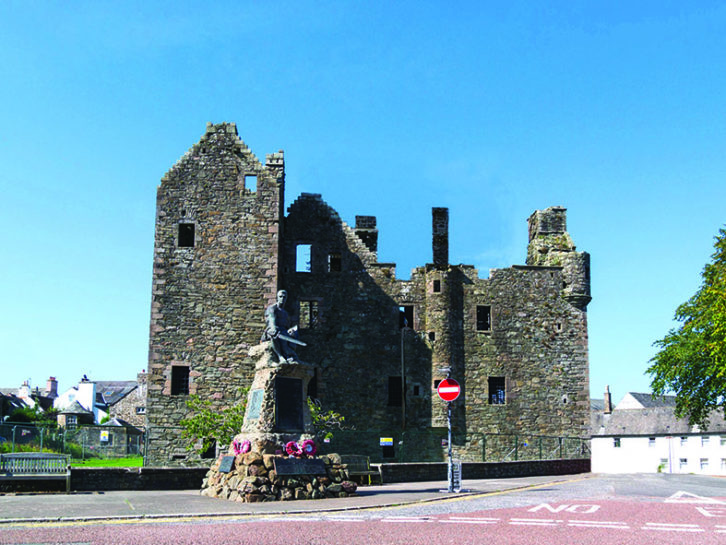
Kirkcudbright Tolbooth, dating back to 1629, once collected tolls, and housed municipal offices, the sheriff court and the prison. Now it is home to a thriving regional arts centre, Kirkcudbright Galleries.
It also holds the Kirkcudbright Artists’ Collection, comprising more than 600 works of fine art, illustrations, books, decorative art, craftwork, silverware and furniture. There is a well-stocked gift shop for souvenirs and the café has an excellent menu – which we took advantage of!
Oour final stop was in the town centre, to see the ruins of MacLellan’s Castle. Built in the 16th century by Sir Thomas MacLellan, the family sold it to the Earls of Selkirk in 1752. These days, it is managed by Historic Environment Scotland.
We enjoyed our visit to Kirkcudbright, which would make an ideal base for a tour in this lovely part of the world. Surrounded by coast and hills, it is popular with cyclists and walkers, and plays host to numerous events throughout the year for visitors.
Sadly our time was up, so we returned to the campsite for our final night before our trip back down the M6 to North Wales. We easily filled our days in Dumfries and Galloway, and would highly recommend it as an excellent touring destination.
TOUR ESSENTIALS
When to go
Dumfries and Galloway is a gorgeous destination at any time of year, although high summer is when the tourists (and in some places, the midges), are at their busiest.
Food and drink
- Pot-a-Doodle-Do
- Floors Castle Courtyard Café
- Designs Gallery & Cafe
- Balcary Bay Country HotelBrew
- Brew Ha Ha Café (01671 404 203)
Where we stayed
Auchenfranco Camping & Caravan Site
- Mains of Auchenfranco, Lochfoot, Dumfries, DG2 8NZ
- 01387 730 473
- www.auchenfrancoholidays.co.uk
- Open all year
- Charges £12 (pitch+2+hook-up)
A 1.5-acre Camping and Caravanning Club Certificated Site , with breathtaking views. Just six miles from Dumfries town centre.
Find out more
- Melrose Abbey, Threave Castle & MacLellan’s Castle
- Castle Douglas & Stewartry Museum
- Broughton House
- Kirkcudbright Tolbooth
If you liked this… READ THESE:
Scotland: Practical Motorhome Travel Guide
10 top sites for history lovers
Best motorhome for 2022: our top picks
If you’ve enjoyed reading this article, why not get the latest news, reviews and features delivered direct to your door or inbox every month. Take advantage of our brilliant Practical Motorhome magazine SUBSCRIBERS’ OFFER and SIGN UP TO OUR NEWSLETTER for regular weekly updates on all things motorhome related.
We walked around the bustling harbour and seafront, soaking up the atmosphere. It was a lovely day, so we ate lunch sitting in the sunshine overlooking the harbour
